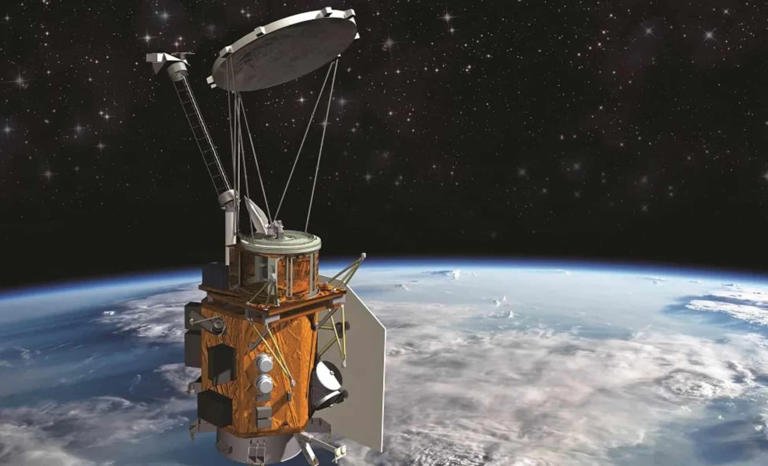
Rendering of the Weather System Follow-on–Microwave satellite. Credit: BAE Systems
By Lydia Amazouz,
Published by MSN, 29 June 2025
In a significant move for both the aerospace industry and the U.S. military, SpaceX has been awarded an $81.6 million contract to launch the Weather System Follow-on – Microwave Space Vehicle 2 (WSF-M2) satellite in 2027. As reported by SpaceNews, this deal, part of the National Security Space Launch (NSSL) Phase 3 program, highlights SpaceX’s growing influence in military satellite launches. The Space Systems Command awarded the contract as part of the ongoing USSF-178 mission, further cementing SpaceX’s position in the competitive space launch sector, where it has recently secured three consecutive wins. With WSF-M2 marking the second satellite in the WSF-M series, its launch is critical to the U.S. military’s weather-monitoring capabilities.
SpaceX’s Growing Influence in Military Launches
The recent contract awarded to SpaceX showcases the company’s increasing dominance in the U.S. military space programs. SpaceX has successfully won three consecutive missions under the NSSL Phase 3 initiative, demonstrating its operational reliability and capability in handling high-stakes military satellite launches. The USSF-178 mission, which will launch the WSF-M2 weather satellite, is just another step in SpaceX’s journey towards becoming a key player in national security space missions.
The launch of WSF-M2 is particularly significant because it represents the second and final satellite in the WSF-M program, a vital initiative for monitoring the global weather environment. The first satellite in this series, WSF-M1, was launched in April 2024, with WSF-M2 following in 2027. These satellites will be crucial for military operations as they will provide critical data on tropical cyclone intensity, storm tracking, and space weather.
According to Col. Matthew Flahive, chief of Launch Mission Solutions Delta at the Space Systems Command, “It is a strategic advantage when we can flexibly manifest small satellites on our launch vehicles with additional capacity to support emergent operational requirements and the research and development community.” This statement reflects the increasing importance of flexible, reliable, and cost-effective space launches, a characteristic that SpaceX consistently delivers with its Falcon rockets.
The Strategic Importance of Weather Monitoring Satellites
The WSF-M2 satellite is designed to provide essential weather data, not only for hurricane monitoring but also for the broader understanding of environmental conditions that impact military and civilian operations. Both the WSF-M1 and WSF-M2 satellites will operate in sun-synchronous orbits, allowing them to offer continuous global coverage. These satellites are equipped with advanced sensors capable of measuring ocean surface vector winds, vital for assessing tropical storm intensity and monitoring their development.
Beyond tracking hurricanes, these satellites are designed to monitor space weather and the energetic charged particles that can impact satellite operations and communications. The importance of this data extends to a wide range of military and commercial applications, from improving satellite resilience to assessing the state of global weather systems that affect national security.
In addition to their weather monitoring capabilities, the WSF-M constellation will also provide valuable data on sea ice, soil moisture, and snow depth—data that can be used for strategic military assessments and operations in polar and sub-polar regions.
Small Satellites and Their Expanding Role in Military Space
Along with the WSF-M2 weather satellite, the BLAZE-2 payload will carry experimental small satellites developed by various defense agencies. These small satellites are integral to the ongoing advancement of military space technologies and the expansion of space-based research.
The role of these smaller payloads is evolving, with increasing emphasis placed on their ability to complement larger missions and address emergent operational needs. As Col. Flahive pointed out, “It is a strategic advantage when we can flexibly manifest small satellites on our launch vehicles with additional capacity to support emergent operational requirements and the research and development community.” This flexibility not only strengthens the operational capability of the U.S. military but also enhances the role of private companies like SpaceX in serving the needs of both military and commercial space sectors.
See: Original Article





